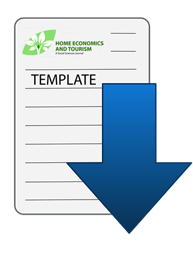MOTIF DAN PEWARNAAN BATIK TULIS DI DUSUN GIRILOYO DESA WUKIRSARI KECAMATAN IMOGIRI KABUPATEN BANTUL PROVINSI DAERAH ISTIMEWA YOGYAKARTA (Studi Kasus di Industri Batik Sri Kuncoro)
 ), Adriani Adriani(2), Sri Zulfia Novrita(3),
), Adriani Adriani(2), Sri Zulfia Novrita(3), (1)
(2)
(3)
 Corresponding Author
Corresponding Author
Full Text:
 Language : en
Language : en
Abstract
This research aimed to describe the shape of classical batik motif Yogyakarta using natural dyes and synthetic dyes as raw materials in the coloring process. This research method uses qualitative descriptive research. The data collection is done by using interview, observation and documentation. In this study, the informant of this data including: the leader and some of the craftsmen who know about batik and batik dyeing in in Sri Kuncoro batik industry. Furthermore, the data reviewed and analyzed by the steps of data reduction, data presentation, and conclusion drawing. Data validation was done by triangulation to the head of the village, batik museum educators.The survey results revealed that: there are hundreds of different name of classical motifs but the kind that widely produced in batik Sri Kuncoro is the motive sidoasih, sidomukti, wahyu tumurun, truntum, srikuncoro, udan liris, and sirgunggu wiguno. The motives provided are decorative naturalist, geometric, and decorative ornament consisting of primary, complementary ornament, and IsenIsen. In coloring method using two kinds of colorings, the two substances are natural dyes from plants derived from leaves, flowers, fruit peel, bark, and roots of plants, whilst the types of synthetic dyes are using naphtol, indigosol, and rapide. For batik dyeing process, the stages starting from mordanting of natural dyes, pattern making, klowong, nerusi, ngiseni, mencolet, menembok, dyeing, sagging, then the second dyeing process is to covers down. Kata kunci: Batik Sri Kuncoro, Bentuk motif batik, Proses pewarnaan
 Article Metrics
Article Metrics
 Abstract Views : 364 times
Abstract Views : 364 times
 PDF Downloaded : 256 times
PDF Downloaded : 256 times

